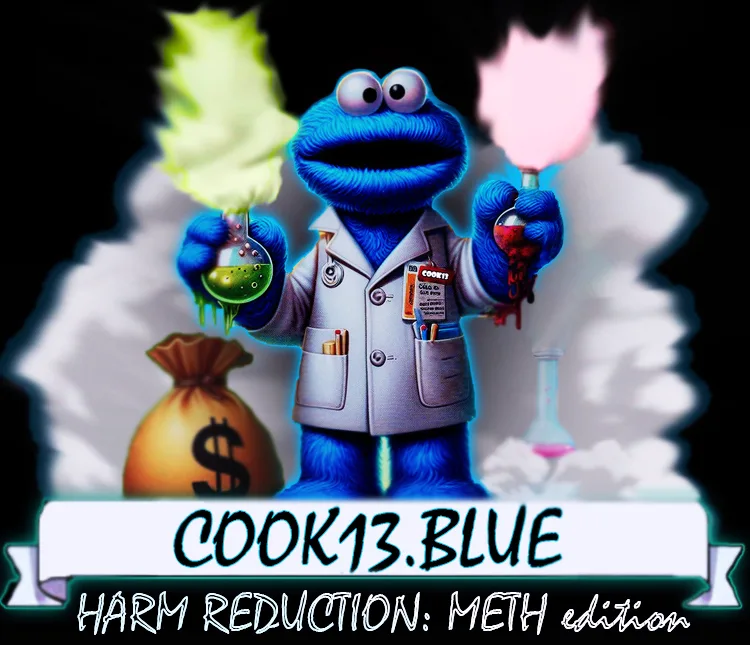💉harm reduction
Why Methamphetamine Might Stop Producing High
Methamphetamine is known for its intense euphoric and stimulant effects—but for many, that rush eventually fades. What causes this shift? This guide explores the neurochemical, psychological, and physiological reasons why meth may stop producing a “high,” and outlines science-backed strategies for recovery. From dopamine depletion to nutrient deficiencies and sleep disruption, we break down the mechanisms behind blunted effects and how the brain can heal over time read more…
HOW TO PROTECT YOUR BODY WHILE USING METH
Using meth doesn’t have to mean giving up on your health. This harm reduction guide outlines practical, science-backed strategies to protect your brain, heart, teeth, muscles, mental health, and vital organs while using methamphetamine. From dopamine-supporting supplements like L-Tyrosine and Mucuna Pruriens to cardiovascular aids like CoQ10 and magnesium, this resource provides clear recommendations to reduce damage and support recovery — even during active use. Learn how to counteract “meth mouth,” rebuild your body, support sleep, and prevent long-term harm while staying informed and in control. read more…
Piperine and Grapefruit: How They Can Potentiate Methamphetamine
Piperine (black pepper extract) and grapefruit juice can boost meth’s effects by slowing its breakdown in the liver. This means a stronger, longer-lasting high from less. While these natural potentiators may enhance your experience, they also increase risks—so dose carefully and stay informed. read more…
THE DEFINITIVE GUIDE TO ‘CRACKBACK’
This guide breaks down the “crackback” test — a simple visual method for judging substance purity based on how it re-crystallizes. Pure samples solidify smoothly from the edges inward, while impure or mixed ones stay slushy or uneven. It’s not foolproof, but it’s a quick, street-level way to spot quality differences. read more…
AMINO ACIDS: L-TYROSINE
L-Tyrosine is a natural amino acid that boosts dopamine and other neurotransmitters, supporting focus, mood, and energy—especially under stress or sleep deprivation. While it feels smoother than traditional stimulants, high doses or unsafe combinations can carry serious risks. Used wisely, it’s a functional tool for cognitive and physical performance. read more…
METH AND PCP TRIGGER SAME BRAIN CHANGES
New research reveals that meth and PCP cause similar cognitive damage by altering neuron function in the prefrontal cortex—specifically, converting excitatory neurons into inhibitory ones. This brain change, linked to excess dopamine activity, may be reversible and opens new paths for treating drug-related and psychiatric cognitive impairments. read more…
VAPING METH TIPS
Learn how to minimize toxic exposure when vaping meth by controlling heat, using water filtration, keeping pipes clean, and adopting gentler inhalation techniques for a smoother, safer experience. read more…
DOPAMINE
Dopamine is a key brain chemical that affects movement, motivation, emotions, and thinking. Imbalances can lead to disorders like Parkinson’s, depression, and schizophrenia. It also influences how we feel pleasure and learn from experiences. read more…
CLEANING METHAMPHETAMINE FROM IMPURITIES/CUT
This guide explains the essential steps for cleaning methamphetamine to remove impurities using anhydrous acetone. It highlights the importance of proper drying and filtration techniques to preserve product quality and safety precautions to minimize health risks during the process. read more…
LEVOMETHAMPHETAMINE EXPLAINED
Levomethamphetamine is a non-addictive form of methamphetamine used in nasal decongestants. It works by releasing norepinephrine, causing vasoconstriction without euphoria or addiction. It has a longer half-life and may cause typical decongestant side effects like increased heart rate and headache. read more…
N-ISOPROPYLBENZYLAMINE N-ISO TOXICITY
N-isopropylbenzylamine – a chain isomer of methamphetamine, has been used to adulterate methamphetamine, and distributed as fake methamphetamine by illicit manufacturers, leading to a world problem of N-isopropylbenzylamine exposure. read more…
HARM REDUCTION: THE ULTIMATE GUIDE FOR METHAMPHETAMINE USE
Some people want meds to take the unpleasantness away after using methamphetamines. Others want to take “something” to keep from getting the same reactions before using meth. The wiser will be the second group. For those of you who know little or nothing about the upkeep of your body and what meth is doing to it: There is NO magic pill. read more…
MEXICAN METH & ISOPROPYLBENZYLAMINE N-ISO EXPLAINED
As most (or some) of you know – mexican meth is cooked using P2P synthesis, due to the fact that precursors for phenylacetone cook (phenyl-2-propanone) can be synthesized on site from substances that are cheaper and much easier to acquire nowadays than for example pseudoephedrine. Unfortunately -for the end user- P2P method produces a racemate product (racemate, or racemic, means it contains both isomers) which must then be cut with a substance like n-iso to be able to form big crystals like the end users want to see [for whatever reason] read more…
METHAMPHETAMINE HARM EXPLAINED
To begin this guide id like to start with the brain, as it takes quite a bit of damage from daily meth use. Even occasional users risk some damage, depending upon there dosage. Methamphetamine can cause neurotoxicity with single large dose (10mg/kg). It is known to exert neurotoxic effects on dopaminergic neurons. read more…
RE-SENSITIZATION ‘HACKING TOLERANCE’
When a drug is taken in high doses for a long time, the body develops a compensatory response – this means that when the brain detects the drug is about to kick in, it immediately induces the opposite effects to the drug, and the result is a weaker drug effect (drug tolerance). read more…
by. COOK13 🍪





